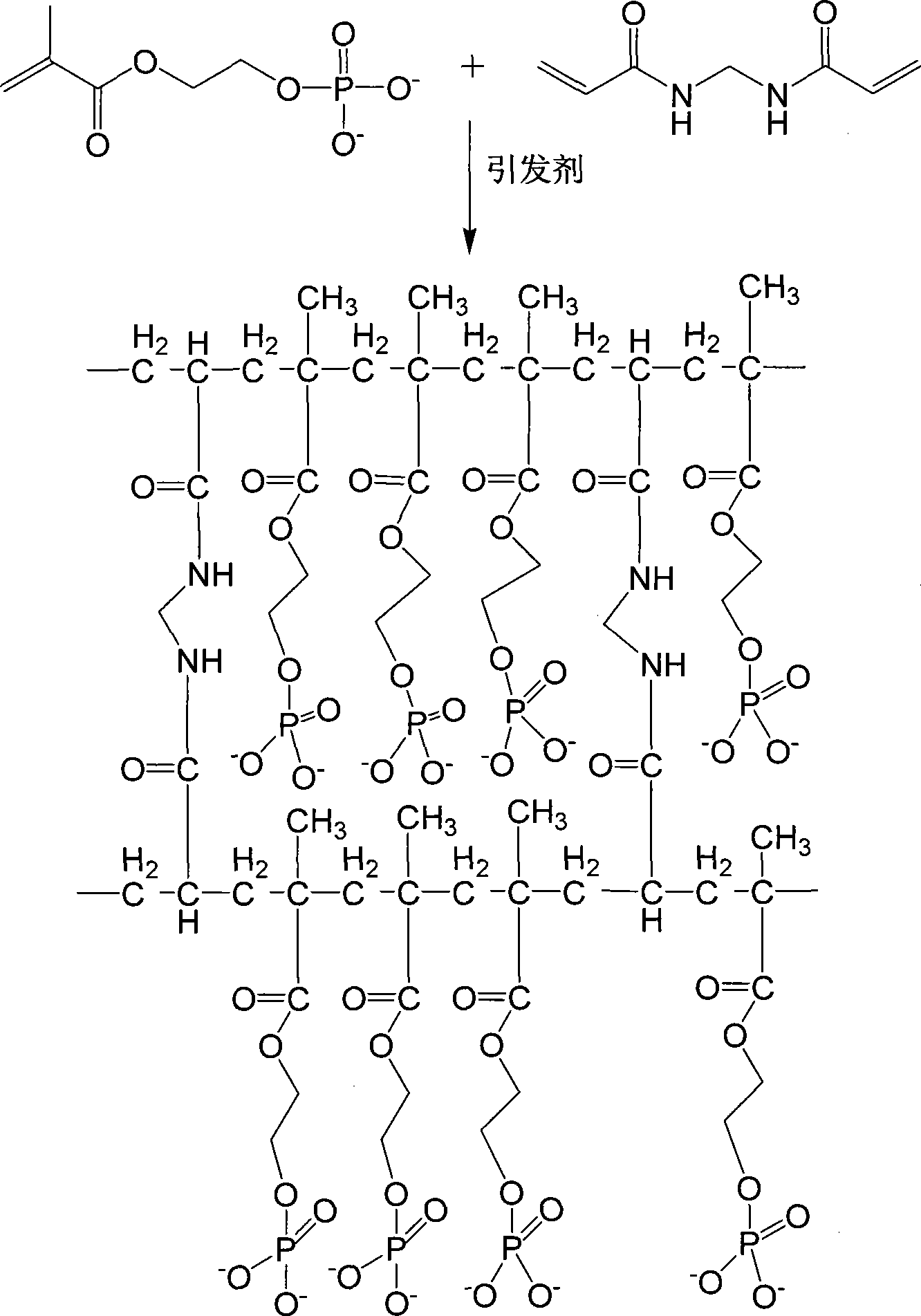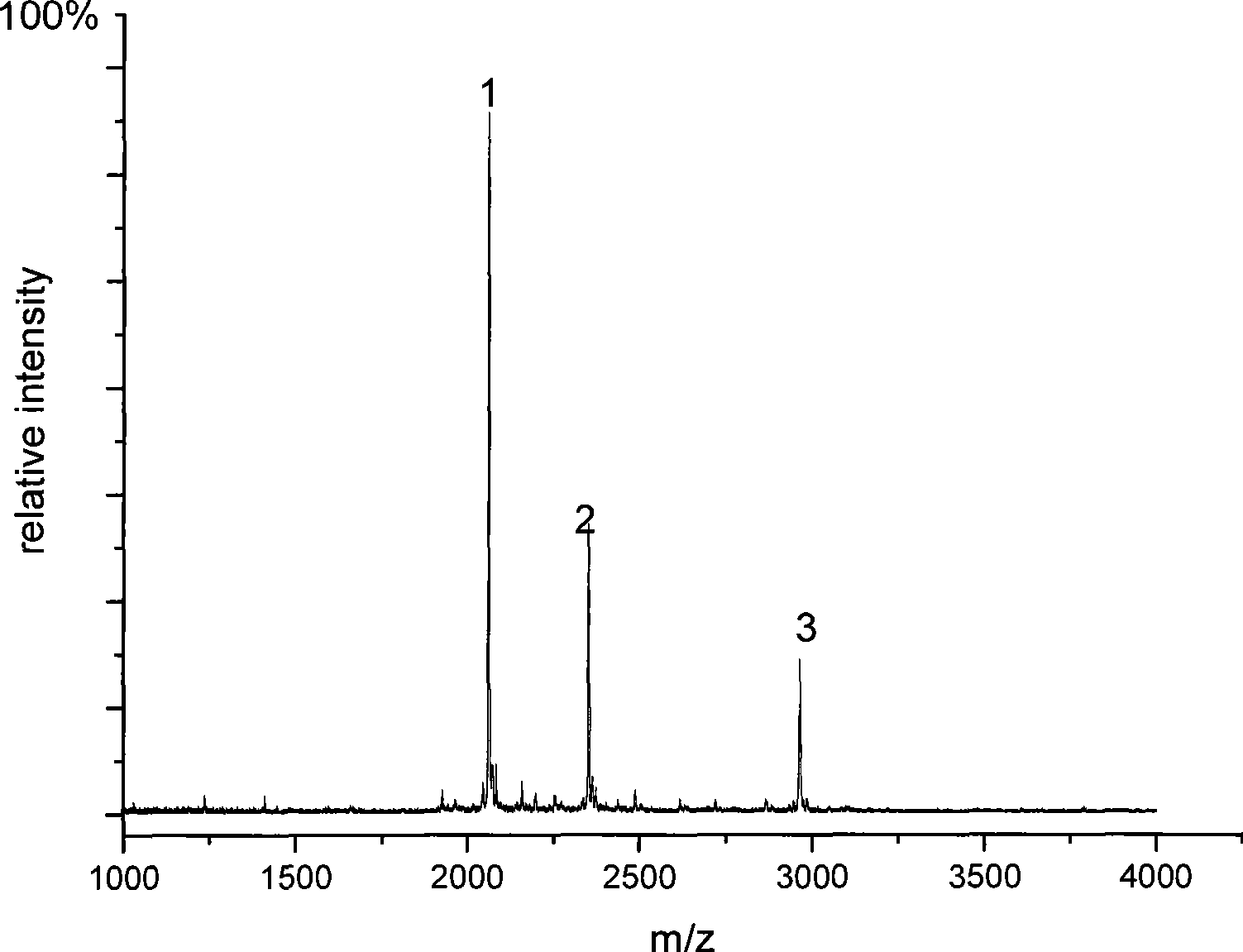Preparation of polymer material for enriching phosphorylated peptide segments
A technology of polymer materials and phosphorylated peptides, which is applied in the field of separation and purification of phosphorylated peptides, and can solve time-consuming and labor-intensive problems
- Summary
- Abstract
- Description
- Claims
- Application Information
AI Technical Summary
Problems solved by technology
Method used
Image
Examples
Embodiment 1
[0025] Example 1 Preparation of polymer monolithic column
[0026] The monolithic column is a special liquid chromatography column, which forms a porous and continuous polymer by pouring the polymer reaction liquid into the column tube through in-situ polymerization. The polymer monolithic column has very low column pressure due to many through holes, and has little mass transfer resistance due to convective mass transfer, which is very suitable for sample pretreatment. In this example, a polymer monolithic capillary column with phosphate groups was prepared and used for the enrichment of phosphopeptides.
[0027] 1) Capillary pretreatment
[0028] First wash the empty capillary column with 0.1M NaOH solution for 1 h, then rinse the capillary tube with deionized water until the pH of the effluent liquid is 7.0, then rinse the capillary column with methanol solution for 10 min, and dry it with nitrogen. A mixture of methanol and methacryloxypropyl-trimethoxysilane was injecte...
Embodiment 2
[0059] Example 2 Preparation of polymer particles
[0060] Most liquid chromatography columns and solid phase extraction columns use granular fillers such as agarose particles, organic polymer particles, and inorganic particles as stationary phases. In this example, polymer particles with phosphoric acid groups were prepared and For enrichment of phosphopeptides.
[0061] 1) Preparation of polymer particles
[0062] Put the polymerization reaction liquid (the proportion is the same as in Example 1) in a centrifuge tube, seal it and immerse it in a water bath at 60°C for 8-24 hours. After the reaction is completed, grind into particles and soak in methanol to remove porogens, residual reaction reagents and some low-polymerization substances produced by the reaction.
[0063] 2) Immobilization of zirconium ions
[0064] The prepared particles were immersed in 20mM zirconium oxychloride solution, shaken for 15 minutes, centrifuged, and the sediment was collected to obtain zirc...
PUM
| Property | Measurement | Unit |
|---|---|---|
| diameter | aaaaa | aaaaa |
Abstract
Description
Claims
Application Information
 Login to View More
Login to View More - R&D
- Intellectual Property
- Life Sciences
- Materials
- Tech Scout
- Unparalleled Data Quality
- Higher Quality Content
- 60% Fewer Hallucinations
Browse by: Latest US Patents, China's latest patents, Technical Efficacy Thesaurus, Application Domain, Technology Topic, Popular Technical Reports.
© 2025 PatSnap. All rights reserved.Legal|Privacy policy|Modern Slavery Act Transparency Statement|Sitemap|About US| Contact US: help@patsnap.com



